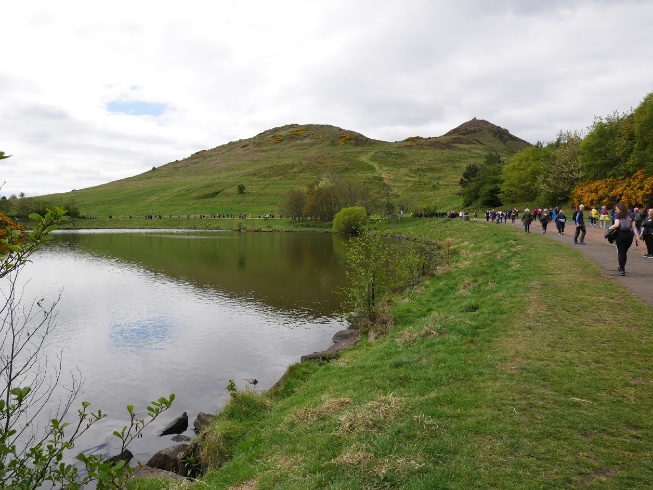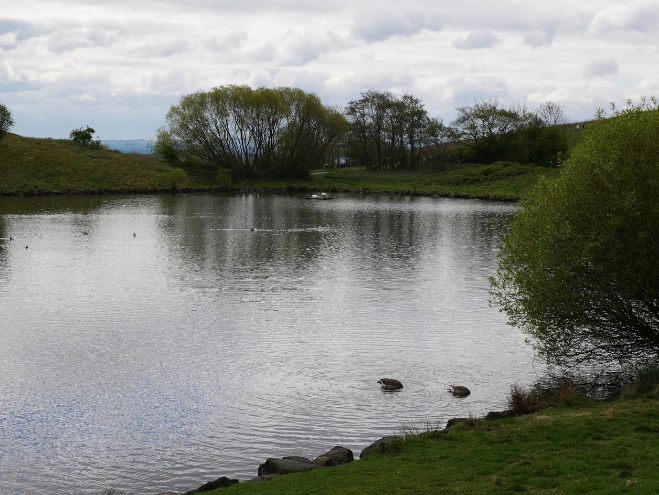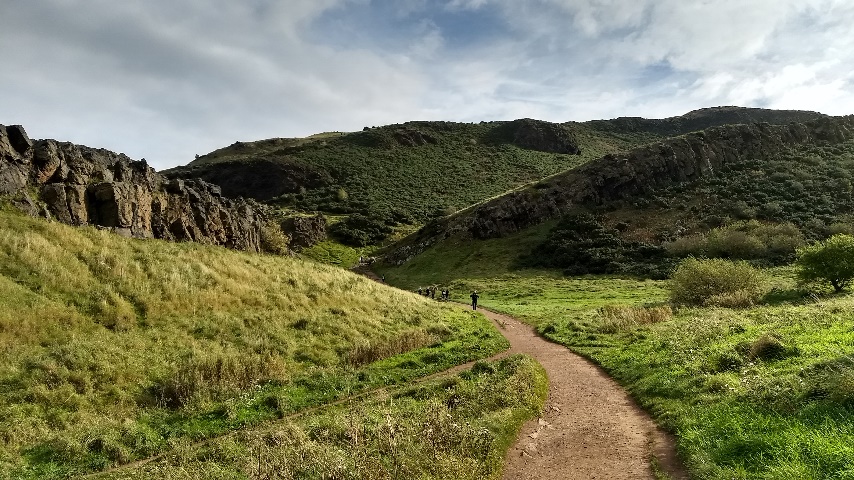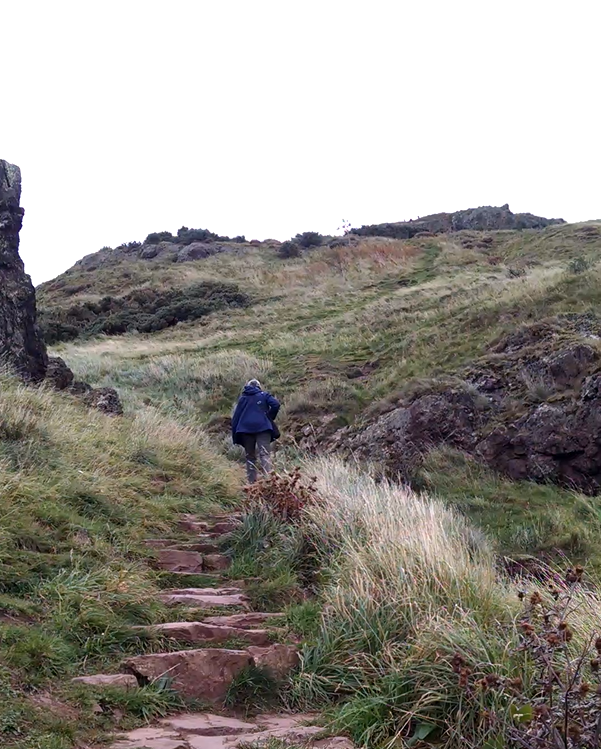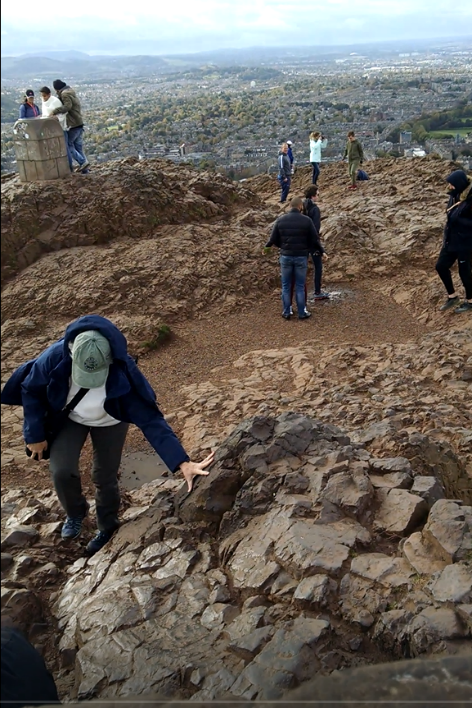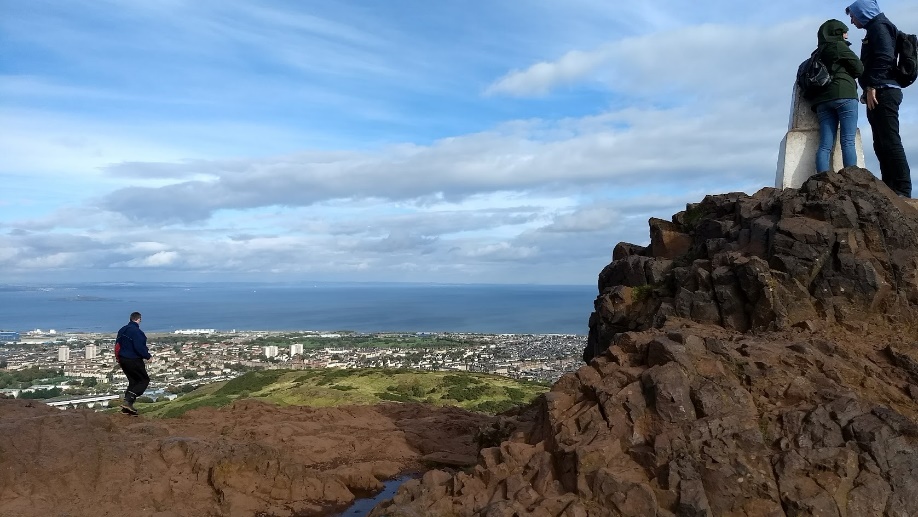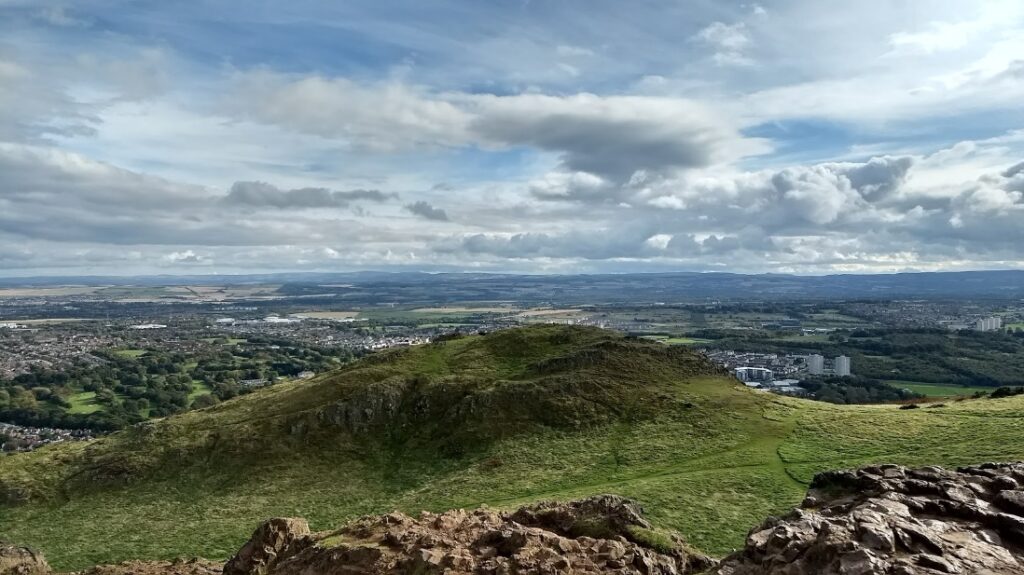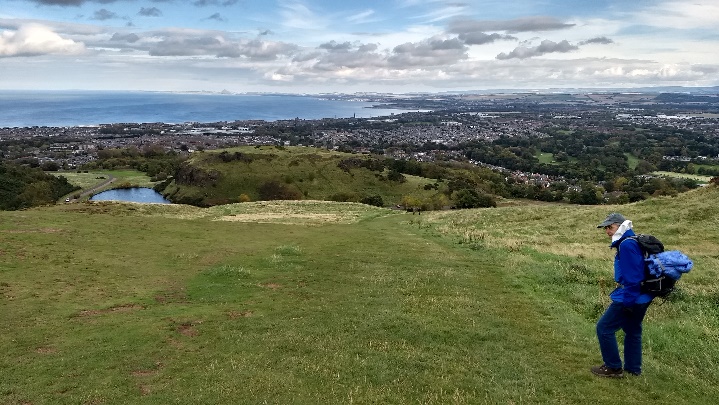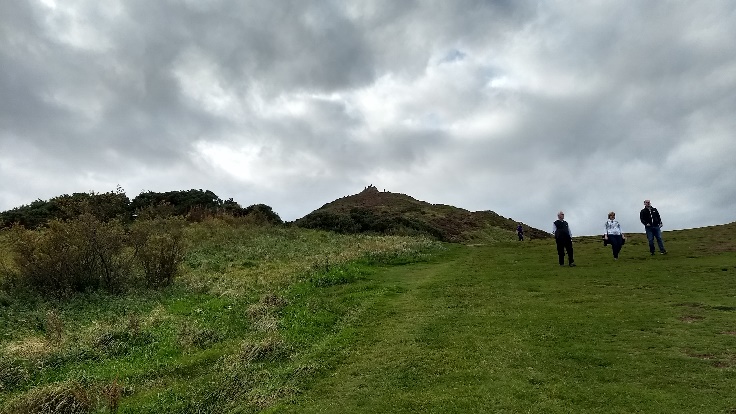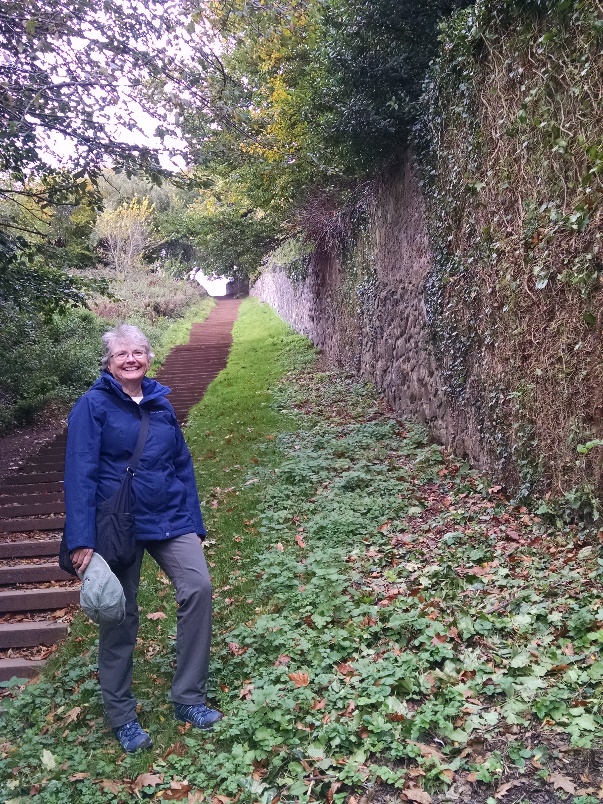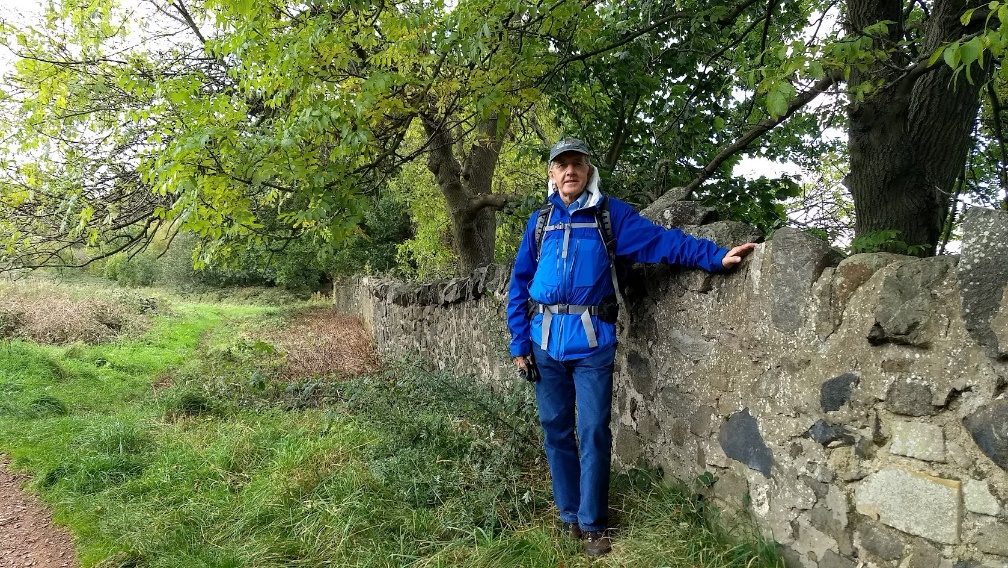Warren and Dianne Hinson
If you have visited Scotland at all (or lived there), you have probably walked about in the historical and political capital city of Edinburgh. And you have probably walked the historic series of streets from Edinburgh Castle to Holyrood Palace commonly known as the “Royal Mile” (we can save exploring the Royal Mile and its associated “closes” for a later article!).
But did you know there is a very challenging hill walk just slightly southeast of the Old Town area known as Arthur’s Seat? At the center of Holyrood Park, the 822 ft (250.5 M) hill is the remnants of a volcanic plug which was left when receding glaciers eroded the remaining volcano – very much the way North Carolina’s Pilot Mountain was formed (yet another similarity between NC and Scotland!).
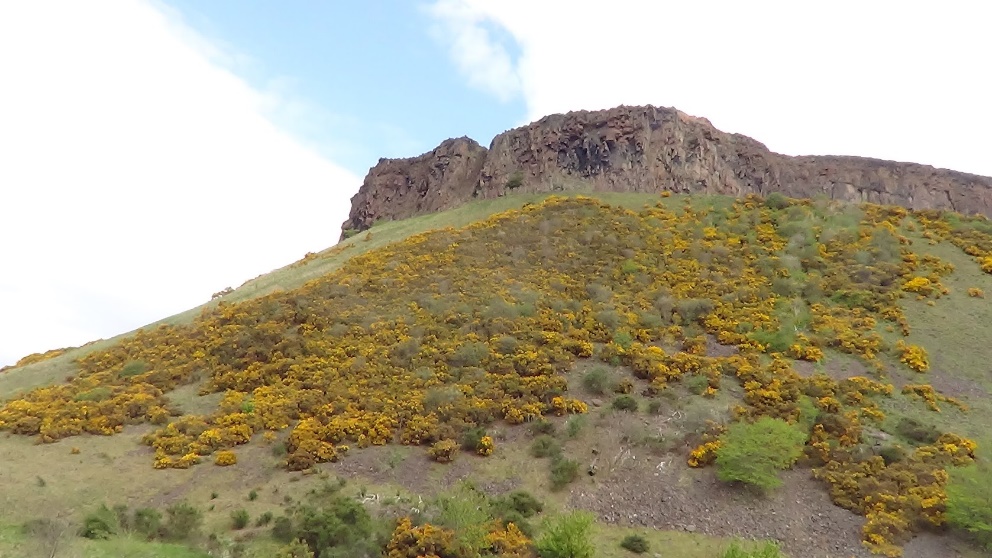
To access Arthur’s Seat, you can walk into Holyrood Park from Canongate, the last section of the Royal Mile, and make your way to Queen’s Drive, which goes around the perimeter of Holyrood Park. This is a lovely walk of its own of about 2.5-3 miles, with lochans, gorse-covered hills, and no steep climbs. There are limited car parks in Holyrood and Historic Environment Scotland (HES) has control over the roads, so HES may close roads or parking areas as they deem necessary, especially holidays and weekends. Access by foot or taxi is probably the most dependable. Also, the park can become quite crowded on weekends with both locals and tourists.
But if you’re ready for more of a challenge, find one of many ways up Arthur’s Seat. My wife Dianne and I didn’t know about the multiple routes when we first climbed, so we took one of the most challenging hand-over-foot paths on the steeper side.
And finally, we made it to the marker on the very windy peak!
As usual when hill climbing in Scotland, the reward for the climb is a panoramic view – in this case of the city of Edinburgh, Holyrood Park, the Firth of Forth (a firth is a river inlet in Scotland), and even far off to the highlands.
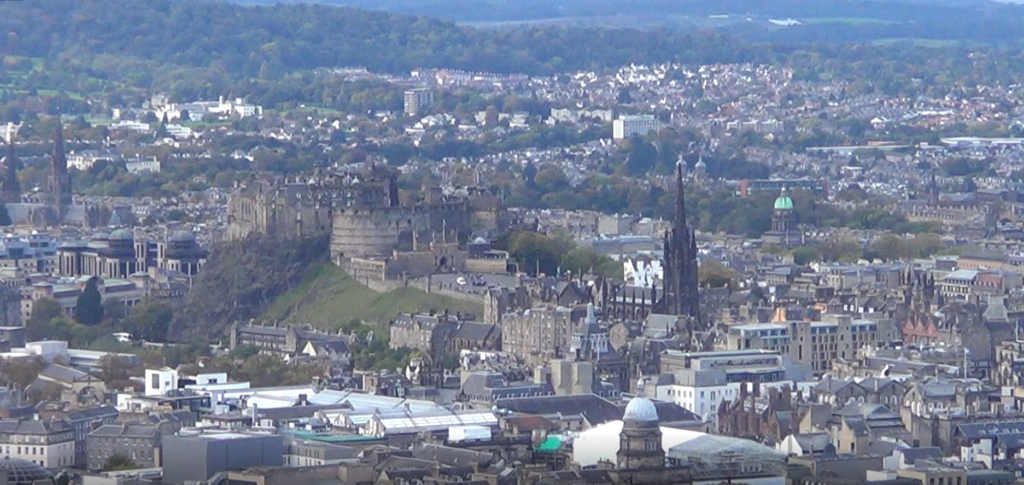
Going down, we realized there is a much gentler slope on the eastern side of Arthur’s Seat.
We then found our way down to the historic area of Duddingston Village by way of a set of 209-ish stairs known locally as Jacob’s Ladder. Note the stone wall beside the stairs which may be a portion of the wall built in 1541 when James V had the ground “circulit about Arthurs Sett, Salisborie and Duddingston craggis” enclosed by a stone wall, thus enclosing Holyrood Park.
Due to some prior research, we found in Duddingston a wonderful restaurant and pub called Sheep Heid Inn, one of the oldest in Scotland. According to their sign, it was established in the 14th century.
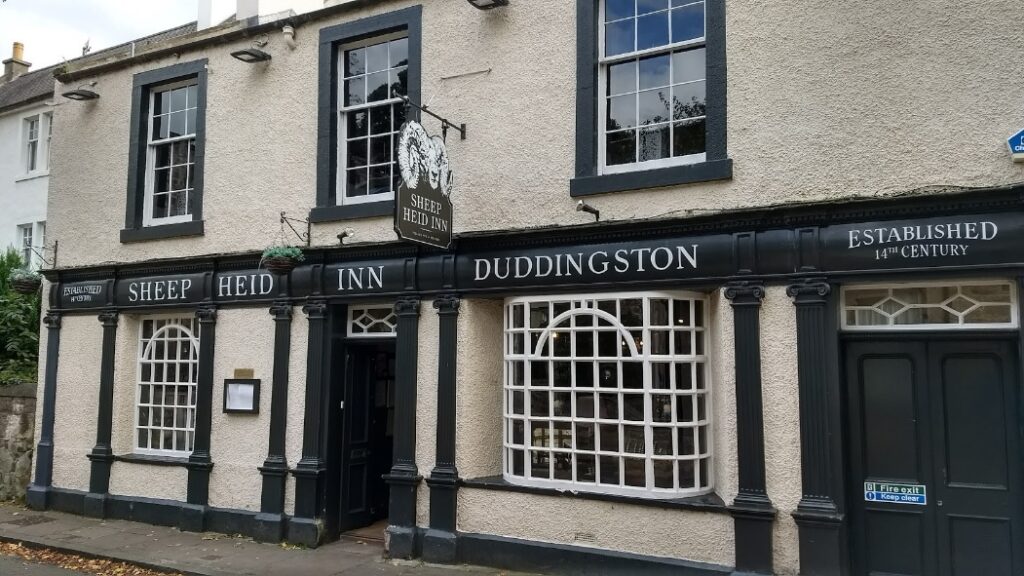
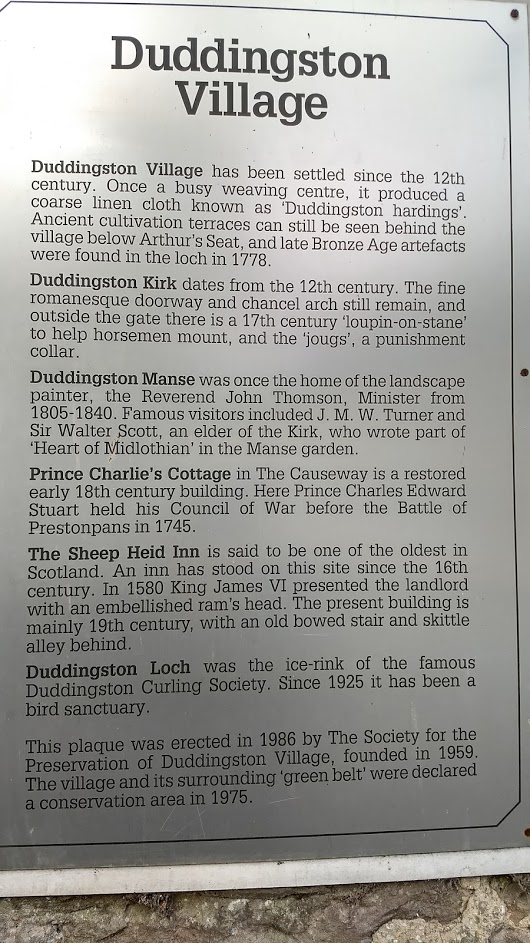
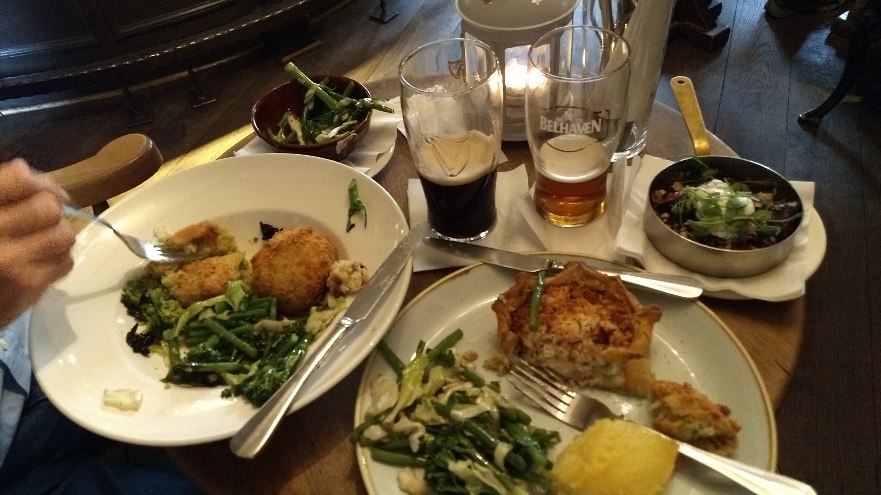
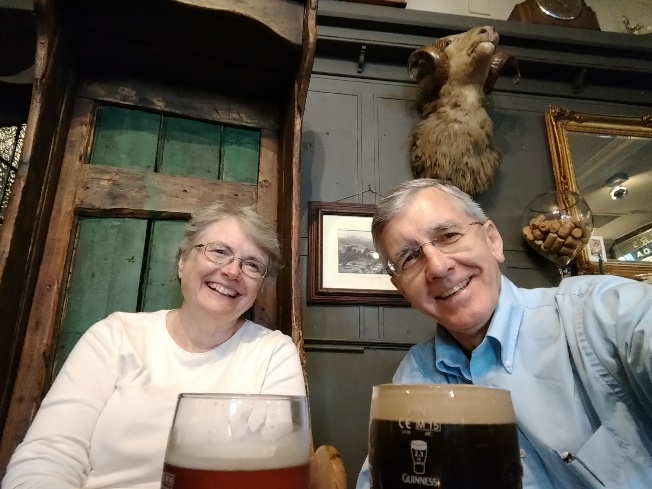
Nothing like a hot meal and an ale in a cozy pub after a day’s hill walking in Scotland, even if shared with the auld sheep heid! (WH note: My wife says we’re talking about the sheep head on the wall, not me, although she’s called me worse names 😉
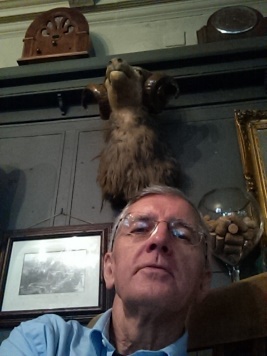
See you on the trail! Warren and Dianne


